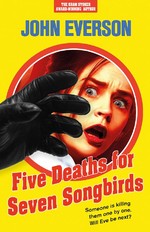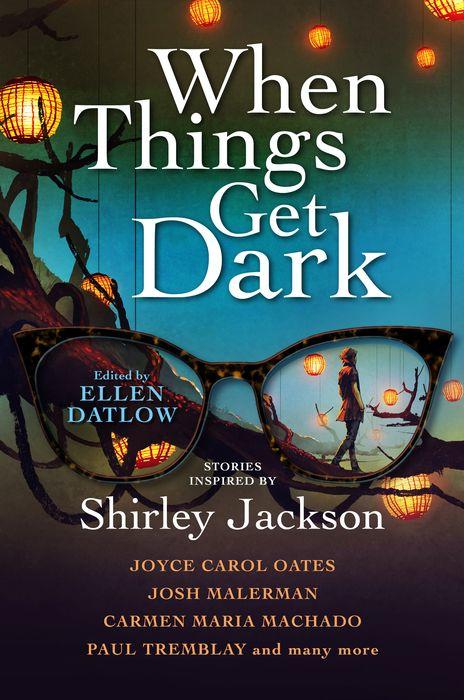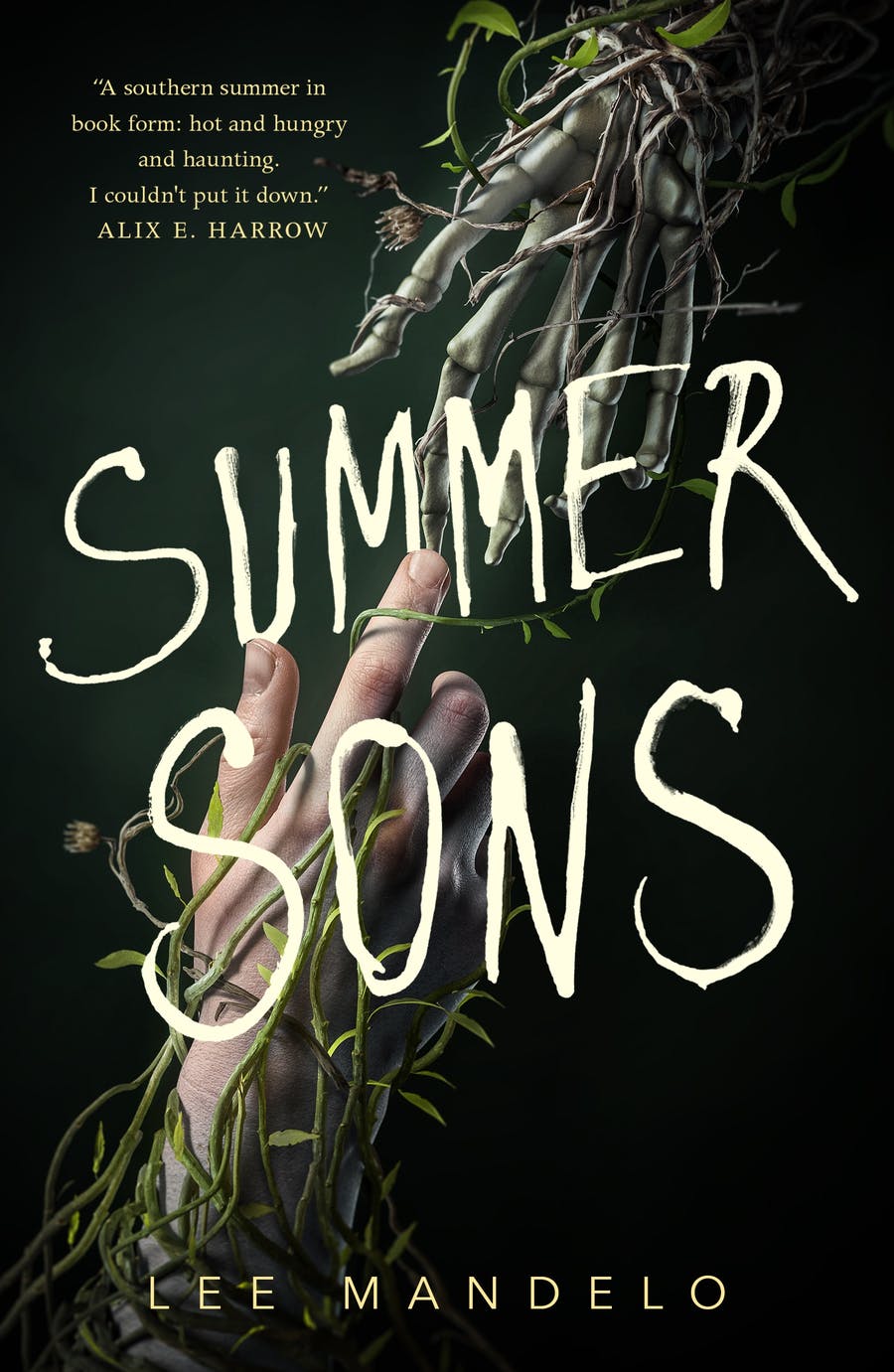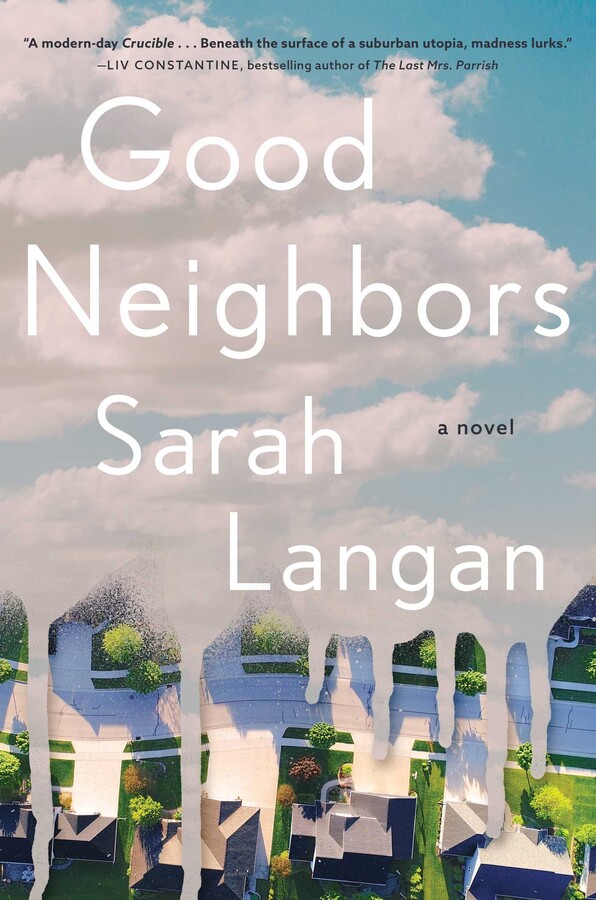The Autumn Springs Retirement Home Massacre / Philip Fracassi
 Tor Nightfire / September 2025
Tor Nightfire / September 2025
Reviewed by: Vince A. Liaguno
The slasher will never die. It’s an unkillable genre that has deflected critical disdain and even defied audience apathy in its interminable cycles of popularity gained and lost. Like the unstoppable villains behind the masks, the slasher has become a cultural mainstay—its predictable formula the comfort food of horror appetites across (now) generations.
It’s no surprise then that the cinematic slasher has stepped off the big screens and into comics, television, and literature in a natural expansion of its pop culture footprint. While the late greats Jack Ketchum and Richard Laymon had long ago incorporated key elements of the slasher genre into their literary offerings, it wasn’t until the turn of the century that slasher fiction came into its own. Contemporary writers like Riley Sager, Grady Hendrix, Josh Malerman, Adam Cesare, Brian McAuley, and Josh Winning have all gone down the slasher rabbit hole—hell, yours truly was one of those first out of the gates in 2006 with The Literary Six—but it’s been Stephen Graham Jones who’s mastered the literary slasher and crafted something of a cottage industry out of the durable horror subgenre. With works like The Last Final Girl, Night of the Mannequins, The Only Good Indians, and the three novels that comprise his Angel Lake Trilogy, Jones has become the master of meta when it comes to the literary slasher, and he’s effectively deconstructed and reconstructed the genre in countless and engaging ways that have captivated scholars and will likely keep them writing for decades.
So, what keeps the literary slasher so compulsively readable? Adherence to the formula is a given but, unlike its cinematic brethren, the slasher novel must offer something wholly unique to capture eyes. While slasher fans may be willing to mindlessly watch a 90-minute film, few horror fiction aficionados will read beyond a few pages if the work doesn’t grab them with the premise or from page one. With The Autumn Springs Retirement Home Massacre, Philip Fracassi opts for the former, with his ingenious choice to combine the tried-and-true slasher formula with the burgeoning geri-horror subgenre—and the results are spectacular.
Rose DuBois is the spunky almost-octogenarian at the heart of the novel—and its final girl. She lives, complacently, at the titular senior living residence where she spends her days rooted in post-retirement routine—book clubs and bingo down at the community center; meals in the dining hall with her best friend, Miller; strolls around the wooded campus; and the occasional visit from her only daughter and grandson. Most of all, she relishes her lack of ties—no pets, no plants, and no romantic entanglements (not that Miller doesn’t occasionally give it his all). She can choose to attend the latest screening of an Igmar Bergman film with friends or stay in her cozy one-bedroom apartment with a good book and a hot cup of tea. It’s more than enough for the retired high school English teacher.
When a friend and fellow resident suffers a fatal fall in her bathroom, no one seems particularly alarmed at first—except Rose whose skepticism over the circumstances and extent of the victim’s injuries sets off what Miller refers to as her sixth sense, citing how she’s always able to identify the killer in the crime movies they’re both fond of. Rose initially dismisses him with one of the best lines in the book: “That’s me. A black Angela Lansbury.”
But when a second resident dies under mysterious circumstances, and then a third, it’s clear to Rose and the reader that there’s a slasher lurking about the Autumn Springs Retirement Home campus. With deft pacing, the body count multiplies considerably while Fracassi mines the fertile material his (primarily) geriatric cast of characters provides. He ably layers in fresh observations on aging and old age, from dementia and the body’s betrayal of itself to the resilience it takes in later life to finish out one’s third act with some autonomy and dignity. There’s a refreshing heart at the core of this otherwise competent slasher that sets it apart from the pack.
With The Autumn Springs Retirement Home Massacre, Fracassi brilliantly crafts both a serviceable slasher and poignant rumination on aging. Skillfully blending slasher and geri-horror elements, he creates what feels like an entirely new and fresh horror subgenre. Impressively, his characters are fully realized older adults—adults who’ve lived full lives and whose life experiences logically factor into their reactions to the slasher mayhem playing out around them. Fracassi doesn’t pander to geriatric stereotypes either and authentically portrays his characters on the page as resourceful, playful, sexual, contemplative, and flawed. This refreshing lack of patronization is also evident in Fracassi’s choice to get bold and bloody with his kills—the fact that his victims are someone’s cute little grandparents spares them none of the gruesome slasher violence.
Long after the discarded tissue or two you’ll need after the last few exquisite pages of Fracassi’s novel, Rose and Miller and Tatum Bird and Gopi and the Baxter sisters will still be on your mind. That alone is the mark of a great writer—and make no mistake, with the wickedly enjoyable The Autumn Springs Retirement Home Massacre, Fracassi has adeptly established himself as one of the greats. Brilliant, bold, and bloody, look for this one to top multiple “year’s best” lists, as well as garner nods for prestigious horror literary honors like the Bram Stoker and Shirley Jackson awards—all deserving outcomes for what is easily this year’s best horror novel.
Purchase The Autumn Springs Retirement Home Massacre by Philip Fracassi.
To Those Willing to Drown / Mark Matthews
 Wicked Run Press / March 2025
Wicked Run Press / March 2025
Reviewed by: Vince A. Liaguno
The current renaissance of horror fiction is due in no small part to the willingness of its authors to stretch the boundaries of the genre. Although there may still be a place for the simplicity of good versus evil, it’s writers’ willingness to expand the scope and depth of the latter that is making the current crop of horror literature both scarier and more culturally relevant. From psychological terrors that emanate from the human psyche like isolation, grief, and post-traumatic response to societal fears and anxieties such as weaponized technology, pandemic, and environmental catastrophe, horror is no longer confined to the long-dormant creature unearthed or masked maniac with a knife.
It's in this new, expansive view of horror that Shirley Jackson Award finalist Mark Matthews’ excellent To Those Willing to Drown falls squarely, if heavy-handedly at times. This short, punchy novel follows dual narratives—one belonging to an unhinged Civil War surgeon with an affinity for bodily amputations, the other to a young camp counselor who makes an ill-fated deal with the proverbial devil (here in the form of a lake witch) that follows her into marriage and motherhood. Matthews tells his tale from multiple viewpoints, clearly delineated at the beginning of his short, muscular chapters. At the center of his story is the profundity of grief and the extent to which some will go to assuage its suffocating weight. It’s from each character’s relationship to his or her own sense and degree of grief from which the horror of the novel springs.
To Those Willing to Drown is steeped in a rich folklore surrounding Michigan’s Torch Lake, which embodies Matthews’ novel with a suitably ominous background and emboldens its deep empathy for its characters and their respective plights. His multi-sensory descriptions of the lake, its sparkle, its depth, its temperature render the body of water a character in and of itself. Scaly creatures slithering under canoes and tentacled arms snatching beachgoers give the story its requisite creature-feature cred, with Matthews ably painting grotesque word pictures of these monstrosities for the reader. As effective as the horror elements are to the novel, it’s Matthews’ sincerity and unrelenting examination of grief that’s the star here. He pulls the scab off the concept of grief and then holds the reader’s eyes forcibly open, sparing them from none of the anguish he puts his characters through:
"I sat in the group, and as I often did, posed a theoretical question: 'What would your morning be like if your child were still alive? Not sick, not pale and weak from chemotherapy or in palliative care, but alive and thriving.' I was poking exposed nerves, some fresh ones, and could feel the pain dripping.
Each mother answered and it summoned forth the soul of their child, their grief rising together like steam from a boiling pot. I was a conductor with his symphony, asking one side of the group, then the next, to speak on their child. They spoke with voices cracking from tears, a mix of sadness and joy."
This use of grief as the guiding force of the novel also permits readers to sympathize with the characters, even when their actions warrant otherwise, which is either a clever or convenient conceit. Either way, it works marvelously. Equally effective is Matthews’ use of—for lack of better term—psychic vampirism, which his antagonist uses to infuse the souls of deceased children into his (literal) bloodstream like a junkie needing a fix.
In his simultaneously gut-churning and gut-wrenching To Those Willing to Drown, Matthews masterfully demonstrates that the depths of man’s grief can be as scary—or scarier—than what lurks in the depths of a lake at night. It’s when you illuminate the surface that you get a hint of both the humanity and the horror that lie in wait within the darkness beneath.
Purchase To Those Willing to Drown by Mark Matthews.
Fives Deaths for Seven Songbirds / John Everson
 Flame Tree Press / March 2022
Flame Tree Press / March 2022
Review by: Vince A. Liaguno
The literary world has enjoyed a spate of well-received meta-slashers in recent years—from Grady Hendrix’s The Final Girl Support Group and Brian McAuley’s Curse of the Reaper to the undisputed champ of the sub-genre, Stephen Graham Jones, with his The Last Final Girl, Night of the Mannequins, The Babysitter Murders, and his award-winning Indian Lake Trilogy (My Heart Is a Chainsaw, Don’t Fear the Reaper, and the upcoming The Angel of Indian Lake).
Now horror author John Everson takes on the much-revered precursor to the slasher era—the giallo. With his thirteenth novel, Five Deaths for Seven Songbirds, Everson crafts a straightforward homage to the highly-stylized, lurid Italian murder mysteries of the 60s and 70s. In keeping with the archetypal giallo plot, a mysterious, black-gloved psychopathic killer stalks and butchers a series of beautiful women—in this case, student members of a jazz ensemble called The Songbirds. Incoming American transfer student Eve Springer arrives at a renowned Belgium musical conservatory called The Eyrie to study under the esteemed musical virtuoso Professor Ernest Von Klein. After auditioning for the titular group at the urging of Von Klein, Eve finds herself the campus jazz collective’s newest pianist, replacing the star of the school’s piano program who she learns was strangled with a piano wire just days before.
Everson knows his way around the structure of the giallo, layering in all the requisite ingredients—the plodding police detective, an unreliable protagonist, ample red herrings, and a bloody body count. The mystery itself is fleshed out in a suitably flamboyant manner consistent with any Mario Bava, Dario Argento, or Lucio Fulci film entry. Everson’s kills are, again, consistent with the giallo subgenre—outlandishly violent, sexually provocative, and themed (in this case, all the kills revolve around music in some way). One murder involving a silver saxophone is so gag-inducingly gruesome that even seasoned gorehounds will wince. Even the book’s cover—a black-gloved hand reaching for a frightened young woman against a garish yellow backdrop with red title letters—reflects the classic garish aesthetic of the giallo.
What sets Everson’s tackling of the giallo-in-print apart from his literary slasher brethren is that he’s playing it straight—this isn’t some kind of deconstruction of the genre. No clever inside jokes or meta references to the film subgenre it lovingly imitates. No, Everson sticks to the giallo’s cat-and-mouse conventions and gives readers a full-on technicolor nightmare that’s as moody as any cinematic giallo’s prog rock score. It’s a frightfully fun melodramatic murder mystery with the pacing of a sexy thriller.
Purchase Five Deaths for Seven Songbirds by John Everson.
When It Rains / Mark Allen Gunnells
 Crystal Lake Publishing / March 2022
Crystal Lake Publishing / March 2022
Reviewed By: Vince A. Liaguno
The novella format has gained popularity in recent years—not quite requiring the commitment of a novel yet allowing the reader to spend time with a tale and its characters a little longer than a short story. Stephen King has made good use of the format over the course of his career, crafting full-length works by pulling together a handful of novellas like he did with Different Seasons (Viking Press, 1982), Four Past Midnight (Viking Press, 1990), Hearts in Atlantis (Scribner, 1999), and If It Bleeds (Scribner, 2020). Likewise, Mark Allen Gunnells has revisited the novella format over the course of his still-burgeoning career with The Summer of Winters (Evil Jester Press, 2013), Fort (Sinister Grin Press, 2015), and the more recent 2B (Valhalla Books, 2021).
Gunnells employs the novella format for his latest, When It Rains, the events of which take place over the course of three hours on the campus of a fictional South Carolina university. It’s the perfect structure for the pacing required and allows Gunnells to move the story along at a brisk clip. When an anomalous downpour of malodorous, gelatinous precipitation begins to fall, various denizens of Friedkin University take sanctuary inside the campus bookstore and café. As the ragtag ensemble watch with growing horror as the rain spreads worldwide, paranoia-filled survivalist instincts kick in and sentiments among the group begin to fracture. With the origins of the weird rainfall an unknown, media reports begin to fuel a growing panic within the bookstore of contagion. Are those who were caught in the rain at risk for some unknown infection —and, more importantly to those who managed to stay dry—is whatever they might have contracted transmissible? It’s this slowly-percolating dilemma that fuels the emotional core of Gunnells’ tale and gives him a wide berth to comment on the self-preserving nature of human beings pushed to the brink during times of uncertainty.
In case the influences on When It Rains aren’t clear from the outset, Gunnells namechecks a few of them for the reader—namely, the famous Twilight Zone episode “The Monsters Are Due on Maple Street” and, most obviously, King’s novella The Mist, first published in 1980’s Dark Forces: New Stories of Suspense and Supernatural Horror before the edited version that appeared in his 1985 collection Skeleton Crew. Like The Mist, Gunnells populates When It Rains with a combination of stock characters (the bookstore employees, the loud-mouthed know-it-all, an elderly couple) and some wholly original characters like Tony and Vincent, a gay couple for whom remorse for an undiscovered infidelity drives a final act of selflessness, or the older closeted professor who takes a student with considerable daddy issues under his proverbial wing in their shared quest to survive.
Gunnells opts for short passages told from the alternating viewpoints of the various characters to propel his narrative forward, a wise choice considering the size of his ensemble and the short window of time over which the events of When It Rains take place. There’s an urgency, a momentum that he’s able to establish from the outset and skillfully maintain throughout the novella. He manages a whopper of a twist during the story’s finale that no reader will see coming and then cleverly adds a thoughtful epilogue that reminds readers of the very human toll this story has taken on its characters.
When It Rains is an excellent reminder of the old adage about good things coming in small packages. Gunnells adroitly presents the central moral dilemma in such a way that the reader both understands and empathizes with the difficult consensus reached while simultaneously reviling those coming to said consensus. Insightfully, Gunnells shows us that humanity and inhumanity lie somewhere along a spectrum and that the sliding scale of our decisions is often fraught with moral ambiguity and lots of gray space in between the extremes.
Purchase When It Rains by Mark Allen Gunnells.
When Things Get Dark / Edited by Ellen Datlow
 Titan Books / September 2021
Titan Books / September 2021
Reviewed by: Vince A. Liaguno
Crafting a tribute anthology to any established writer is a tall order, one fraught with the potential danger of cheap mimicry. When Things Get Dark, Ellen Datlow’s curation of new Shirley Jackson-inspired original tales, aspires to be more homage to Jackson’s themes versus an attempt to imitate her stylistic literary idiosyncrasies. The 18 stories endeavor to hit a sweet spot between reverential pastiche and modern thematic interpretations of Jackson’s rich catalog of work. Some of the stories in Datlow’s collection capture Jackson’s aesthetic, while others play with the eccentricities present in so much of her fiction.
At the heart of several of the stories Datlow presents in When Things Get Dark are middle-class women of a certain age whose well-established worldviews are particularly vulnerable to the fatalistic forces the contributing writers set upon them. All are women on the brink of some degree of madness. In “A Trip to Paris” by Richard Kadrey, for example, the story’s protagonist—longing for release from the claustrophobic chains of domesticity—has poisoned her family only to have their ghosts revisit her in a most inventive and visible way. Despite her increasingly desperate attempts to banish the ghosts that haunt her, they continue to resurface, thwarting her titular trip—an escape from the small, conservative town and its denizens she sees as her oppressors. Kadrey nails the Jackson influences here with gorgeous lines like:
“I was drowning, and when you’re drowning, you’ll do anything to keep from going under. You can’t blame a drowning victim for simply wanting to live.”
Likewise, M. Rickert’s “Funeral Birds” captures the essence of the quintessential Jackson heroine who is caged by the guilt and obsession over her own circumstances with Lenore, a lonely widow preparing to attend the funeral of a woman for whom she was a professional caregiver. Rickert beautifully depicts that Jackson-esque idea of the respectability of ordinary people juxtaposed against the ugliness of the secrets they hide.
In two of the anthology’s standout stories—Benjamin Percy’s “Hag” and Paul Tremblay’s “The Party”—their creators aim more for Jackson’s creepy aesthetic, permeating their tales with a palpable current of anxiety and paranoia. In the former, Percy presents a folkloric tale of a crime reporter—and her stowaway young daughter—investigating a series of murders and an island cult serving a voracious sea witch who demands sacrificial human victims. A foreboding island inn and spooky seagull totems add to the unnerving atmosphere. Tremblay’s “The Party” calls to mind Jackson’s 1958 novel, The Sundial, with its tale of a lesbian couple attending the younger spouse’s work party. An unsettling party theme, a mysterious, alien-like fruit, and strange partygoers are the vague ingredients Tremblay layers in before leaving the reader to fill in the gaps amidst an escalating sense of “something’s not right here…” They say the best stories leave you wanting more—and Tremblay accomplishes this masterfully.
The three best offerings in When Things Get Dark are more Jackson-adjacent than obvious homage. Genevieve Valentine takes Jackson’s recurrent theme of smart women who find themselves in ill-fated situations they can’t escape and crafts a deceptively simple story in “Sooner or Later, Your Wife Will Drive Home.” Structured as a series of seemingly unrelated vignettes, Valentine explores Jackson’s recurrent theme of women doomed by the promise of independence (in this case, driving automobiles) and reinforces the historical prevalence of violence against women in the #MeToo era. Likewise, Laird Barron shows how the worst predators often walk among us in “Tiptoe.” This subtle story involving a childhood game, photography, and the relationships between fathers and sons is beautifully layered and builds—almost unobservantly to the reader—to a wallop of an ending that still haunts me. Barron’s “Tiptoe” is a masterclass on how to artfully build tension, employing striking lines like:
“Trouble is, old, weathered pictures are ambiguous. You can’t always tell what’s hiding behind the patina. Nothing, or the worst thing imaginable.”
Finally, Kelly Link’s closer, “Skinder’s Veil,” is a triumph of magical realism. The story follows a disheartened grad student who’s having difficulty writing his dissertation—hampered by his own procrastination and an annoying roommate. When he receives an unexpected call from an ex-girlfriend begging him to temporarily assume her sweet housesitting gig in rural Vermont, he sees an opportunity to get away from the roommate and finish his thesis. That’s the set-up; to reveal any more of the plot points would be a disservice to the trippy adventure Link has in store for the reader. Suffice to say that “Skinder’s Veil” is as original as anything you’re likely to read this year.
As in any anthology, there will be stories that stand out, stories that fade quickly from memory, and stories that fail to connect; fortunately, Datlow delivers quite a few standouts here and only one or two that seem out of place. When Things Get Dark encapsulates much of the Shirley Jackson thematic universe—fatalism, fear of abandonment, women on the brink of madness, the duality of architectural symbols. Datlow has assembled a reliable cadre of contributors to carry out the daunting task of blending the Jackson aesthetic with their own distinct styles. The result is an often unsettling collection of top-notch tales that explore the darkest corners of the mundane, teasing out the anxiety, terror, and neurosis from the ordinary that Jackson was a master at conveying in her work.
Purchase When Things Gets Dark, edited by Ellen Datlow, here.
Summer Sons / Lee Mandelo
 Tordotcom / September 2021
Tordotcom / September 2021
Reviewed by: Vince A. Liaguno
Body horror, car culture, masculinity, and queer yearning are the key ingredients of Summer Sons, Lee Mandelo’s ambitious debut novel. In what’s ultimately a deceptively keen exploration of grief and longing set in Appalachian academia, Summer Sons is part ghost story, part academic intrigue, and part coming of age story saturated with a heavy coat of southern gothic.
As the novel opens, twenty-something Andrew Blur has just arrived at graduate school in Nashville, Tennessee, where he was to join his best friend and adoptive brother, Eddie Fulton. Sadly, Eddie is dead—the victim of an apparent suicide—and Andrew is left to navigate an inheritance that includes Eddie’s fortune, which comes complete with a roommate and circle of hyper-masculine, drag-racing aficionados and sometimes drug dealers, as well as a paranormal research project at Vanderbilt’s graduate program. Oh, and the body-melding specter of his deceased best friend.
As Andrew reluctantly steers through the life Eddie left for him, he becomes convinced that Eddie’s death was no suicide and sets out to uncover the truth. This leads him to delve head-first into his friend’s American Studies graduate research project on Appalachian folklore—a smokescreen, Andrew uncovers, to pursue answers about the cursed Fulton family legacy. Matters are complicated by missing notes and a curiously invested thesis supervisor, as well as Andrew’s reluctant immersion into Eddie’s circle of friends, most notably roommate Riley and his cousin, Sam. In the end, it all comes down to legacy—those we create and those we inherit—and Mandelo masterfully brings their slow-burn of a narrative to a (mostly) satisfying conclusion.
Mandelo gives readers a lot to unpack in Summer Sons; there’s the cutthroat world of academia (here laced with a bit of institutional racism), the fluidity of sexual orientation, and an exploration of masculinity. Mandelo’s examination of the latter borders on the fetishistic, with a hyper-awareness of their male character’s bodies that enriches the book’s atmosphere of humidity and sultriness. The effect can be both unsettling and rousing, at times lending itself to a queer fever dream. Summer Sons really shines in its juxtaposition of the old-money elitism of its academic setting against the rural Appalachian elements. The contradiction of these two worlds mirrors those of Andrew, who’s trying to navigate both through the fog of the grief process.
With Summer Sons, Lee Mandelo has crafted a horror novel that builds—admittedly, frustratingly slow at first—to an affecting and thought-provoking conclusion. Patient readers will be rewarded ten-fold for sticking with Andrew through his early meandering. Mandelo recompenses handsomely with beautifully wrought relationships that seem to grow organically off the page, an escalating sense of tension that—once it kicks in—propels the narrative at high-octane speed, and a fully realized tale with just enough room to leave you thinking about the characters and their futures long after you close the book.
Purchase Summer Sons by Lee Mandelo here.
Good Neighbors / Sarah Langan
 Atria Books / February 2021
Atria Books / February 2021
Reviewed By: Vince A. Liaguno
British writer and physicist C.P. Snow posited in his final novel A Coat of Varnish (1979) that “civilization is hideously fragile and there's not much between us and the horrors underneath, just about a coat of varnish.” Sarah Langan’s new novel Good Neighbors—her first since 2009’s Audrey’s Door—lends credence to Snow’s assertion in this striking exploration of the psyche of the modern American suburb. Part psychological thriller, part eco-horror, part scathing deconstruction of middle-class suburbia, Good Neighbors is relentlessly tense and savagely grim in its depiction of the suburban façade. It also marks the welcome return of one of fiction’s most insightful and engaging voices.
Maple Street, an idyllic, crescent-shaped enclave on Long Island, presents to the casual observer as the epitome of suburban precision. The lawns are well-manicured, the houses well-maintained, and the denizens themselves a smattering of acceptable middle-class diversity. Everyone smiles and waves and exchanges sidewalk pleasantries. It’s not until the Wilde family moves in—tattooed ex-rocker Arlo, his ex-beauty queen wife, Gertie, their fractious teenage daughter Julia, and younger son, Larry, whose verbal tics and idiosyncratic behavior bespeak his place somewhere on the autism spectrum—that the cracks of this cloistered community begin to show, literally and metaphorically.
The Wildes personify the metaphorical crack on Maple Street. They represent a rung on the social ladder lower than the rest of the residents, and that doesn’t sit well with college professor and queen bee of Maple Street, Rhea Schroeder, whose passive-aggressive machinations preserve the neighborhood’s carefully constructed veneer. At first, Rhea takes the savior tact with the Wildes—and Gertie, in particular. In pulling Gertie closer, Rhea can appear magnanimous while reinforcing how much better, how much more seemingly put together she is than her lower-class counterpart. But as anyone who’s either lived in such a neighborhood or seen The Stepford Wives knows, artifice does not make the sturdiest of foundations. It isn’t long before an incidental drunken confession over cocktails on Rhea’s front porch and a gaping sinkhole that opens up in the neighborhood’s equally idyllic park across the street sets the stage for the unraveling of Maple Street’s meticulously cultivated exterior.
When tragedy strikes, the inhabitants of Maple Street devolve into paranoia and ugliness. Langan shines as she juxtaposes the environmental toxins of the sinkhole against the toxicity of neighborhood gossip and innuendo. As the sinkhole widens and noxious sludge oozes and spreads, so too do the poisonous rumors that pit neighbor against neighbor. Langan expertly builds the tension, and then ratchets it up, until finally letting the lid blow off her literary pot.
Langan’s literary roots are firmly rooted in the horror genre and, although she’s segued after a decade-plus absence into something resembling more of a suspense-thriller with a dash of literary fiction with Good Neighbors, it’s nice to see some of those roots still showing. While the monsters here may not resemble the supernatural terrors at work in her earlier novels like The Keeper or its Bram Stoker Award-winning sequel The Missing, they’re no less terrifying—perhaps even more so because we can recognize and relate to them. If the scariest monsters are indeed those that take human form, Langan gives us a cul-de-sac full of them. Langan does continue down the path taken with her first two books in presenting climate change as an insidious agent of horror, here taking the form of the fissure that opens and swallows at least one of the novel’s characters and serves as the catalyst for the undoing of others. Environmental collapse as the conduit to the collapse of civility—and civilization itself—is a timely and compelling theme that one hopes Langan continues to explore in future works.
Purchase Good Neighbors by Sarah Langan here.




